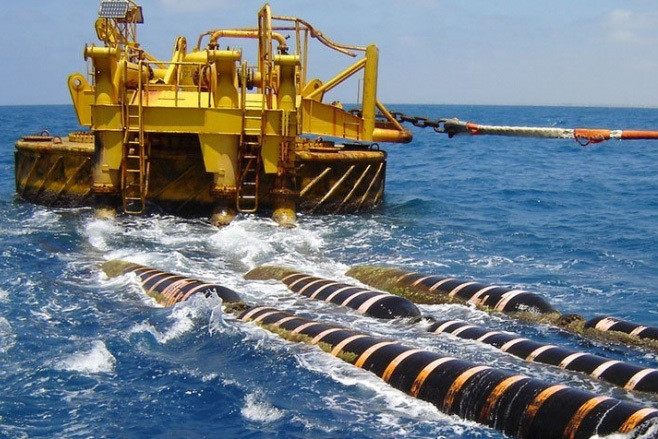The government plans to expand Vietnam’s undersea cable network to ensure a more resilient digital infrastructure.

The IA undersea cable was fully repaired by the end of February 2025. Meanwhile, three faults on two branches of the APG cable (S9 and S1.9) are expected to be fixed between March 15 and April 7.
Only the APG undersea cable remains affected
Speaking to VietNamNet on March 5, a representative from a Vietnamese Internet service provider (ISP) confirmed that the issue affecting the IA cable’s S1 branch, located 190 km from its landing station in Singapore, had been completely resolved.
The disruption occurred on December 26, 2024, and full capacity on the IA cable has now been restored.
As for the APG undersea cable, international partners have informed Vietnamese network operators about the repair schedule for issues on the S9 and S1.9 branches, which arose in early February 2025.
Specifically, the fault on the S9 branch, located 143 km from the APG’s Singapore landing station, is expected to be repaired in the second half of March.
Meanwhile, two faults on the branch connecting to Malaysia are scheduled for repair between March 28 and April 7.
This means that Vietnamese Internet users will need to wait another month before all international connections are fully restored.
Once completed, all six of Vietnam’s international undersea cable systems - AAG, APG, IA, AAE-1, SMW3, and ADC - will be back to normal operation.
Among these six international undersea cables, ADC is Vietnam’s newest and largest-capacity cable, boasting a bandwidth of 20 Tbps. Launched in December 2024, ADC has Viettel as one of its nine investors.
The system is expected to enhance Internet speeds and strengthen Vietnam’s international connectivity. However, ADC has yet to be officially put into commercial operation.
Given Vietnam’s relatively limited number of international undersea cable connections, frequent disruptions have posed significant challenges for ISPs in maintaining service quality.
A long-term strategy for digital infrastructure development
In October 2024, the Vietnamese government approved the country’s Digital Infrastructure Strategy for 2025 and Vision 2030.
The strategy emphasizes that Vietnam’s digital infrastructure must feature ultra-high capacity, extensive bandwidth, sustainability, intelligence, and security to meet the demands of a digital economy, digital society, and e-government while ensuring national security and defense.
Regarding undersea cables, Vietnam aims to launch at least two new cables by 2025 and at least six more by 2030.
This expansion will bring the total design capacity of Vietnam’s undersea cable systems to a minimum of 350 Tbps. The plan also includes the construction of at least one Vietnam-owned undersea cable.
To align with these national goals, Vietnamese telecom companies have started exploring and investing in new international cable routes to enhance the resilience and reliability of the country’s Internet network.
Government policies for sustainable undersea cable development
On December 22, 2024, the Political Bureau issued Resolution 57, which mandates the development of modern, high-capacity, and wide-bandwidth digital infrastructure on par with advanced global standards.
It also emphasizes the need for resilient and sustainable telecommunications and Internet infrastructure.
To facilitate investment in new undersea cables, the Vietnamese government outlined in Resolution 03 (issued on January 9, 2025) the need to review and amend regulations that may hinder the development of international undersea cable projects involving Vietnamese enterprises.
In line with these resolutions, on February 19, the National Assembly passed Resolution 193, introducing a pilot policy framework for fostering scientific and technological innovation, including support for developing Vietnam’s undersea telecommunications infrastructure.
Resolution 193 states that investment projects for undersea telecommunications cables landing in Vietnam will be subject to domestic investment regulations while adhering to national security and defense requirements.
Additionally, the resolution allows government authorities to approve direct contractor appointments for projects involving Vietnamese telecom companies as investors or co-investors.
This policy, which applies to projects launched between 2025 and 2030, aims to accelerate the development of Vietnam’s international undersea cable infrastructure.
In cases where direct contractor appointment is not used, contractor selection will follow internationally accepted practices, as agreed upon by Vietnamese telecom firms and their foreign investment partners.
According to the drafting committee of Resolution 193, this policy is designed to streamline investment and procurement procedures, overcoming existing regulatory hurdles that have slowed the expansion of Vietnam’s undersea cable network.
The committee also explained why this policy is limited to the 2025–2030 period. Given the ambitious goal set out in Resolution 57 and Resolution 03, Vietnam aims to develop nine new undersea cable systems during this timeframe. The special policy framework is therefore crucial to achieving this target within the set timeline.
Van Anh